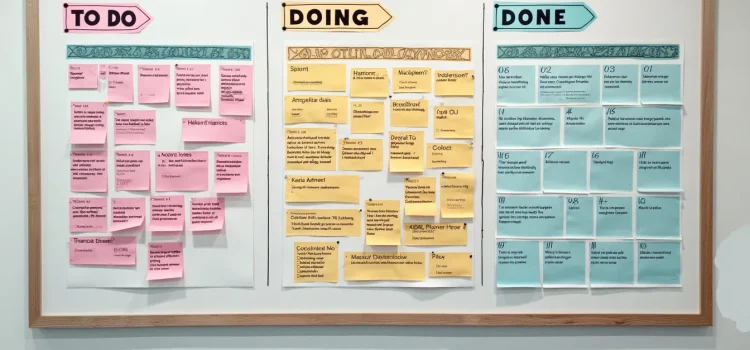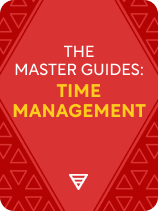

This article is an excerpt from the Shortform book guide to "The Master Guides: Time Management" by Shortform. Shortform has the world's best summaries and analyses of books you should be reading.
Like this article? Sign up for a free trial here.
Do you feel like you’re always busy but never getting enough done? Are you looking for effective methods to track your time and boost productivity?
Learning how to track your time can be a game-changer for your productivity. This piece explores two powerful techniques: bullet journaling and the kanban approach. Both methods offer unique ways to organize tasks, monitor progress, and optimize your daily routine.
Continue reading to learn how to take control of your schedule and make every minute count.
Tracking Your Time
It’s not enough to have a general plan of how you’re going to use your time in advance. It’s also important to know how to track your time so you can measure how much time you spend on any task, judge how effectively you use your time, and determine what adjustments you should make to your schedule. There are several productivity tools to help you do this. The ones we’ll cover here are bullet journaling and the kanban technique.
Bullet Journals
A bullet journal is an organizational tool introduced by Ryder Carroll in The Bullet Journal Method to help you be intentional about how you spend your time and energy. It’s a system that archives your life—past, present, and future—tracking not only the day-to-day details but also your choices, your actions, and how you’ve changed over time. Carroll claims that bullet journaling can aid you in three areas: getting organized, living in the present moment, and finding clarity on what’s important to you. Better yet, the only tools bullet journaling requires are a notebook and a pen.
Carroll explains that throughout the day, you’ll write down tasks, events, and notes that are relevant to you, using as much space in your notebook as you need. To record your information in the most efficient way, he recommends that you use “rapid logging”—a streamlined method of taking notes that focuses on only the most essential information. However, the process doesn’t end there. In bullet journaling, you don’t only record information, you also re-engage with it later.
Through a process Carroll calls migration, you actively assess everything you’ve written and transfer it from one part of your journal to another (or even one journal to another) through daily review, monthly review, and yearly review. Moving information encourages you to reflect on every entry you record, which helps you spend your time and energy with intention. Without this built-in reflection, you’re likely to lose track of not only what you’re doing but why you’re doing it.
The Kanban Approach
Kanban is a visual tool first developed by Japanese automakers to keep track of tasks as they move through your workflow. In Personal Kanban, Jim Benson and Tonianne DeMaria explain that, in its most rudimentary version, a kanban is a chart divided into three columns—“to do,” “doing,” and “done.” Unlike to-do lists that simply show tasks until you check them off, a kanban board displays a task’s entire life cycle. Every task (usually written on sticky notes) begins in the “to do” section, moves to “doing” once you’ve started working on it, and eventually makes its way to “done.” The catch is that you’re only allowed to have a handful of tasks in your “doing” column at any one time—perhaps as few as two or three.
A personal kanban board tracks all your tasks, no matter their size, importance, or type. Once you start paying attention to your work patterns, your kanban board will show you at a glance where your bottlenecks are, the tasks you’re struggling with, and how much more work you’re able to take on. Having all of your tasks in one place helps you identify the right task to do now, whether that’s walking your dog or preparing for a meeting, making sure your energy is going where it will have the most impact. Also, by putting a limit on how many tasks you’re working on at any given time, you ensure that you’re only focusing on priorities you can accomplish.

———End of Preview———
Like what you just read? Read the rest of the world's best book summary and analysis of Shortform's "The Master Guides: Time Management" at Shortform.
Here's what you'll find in our full The Master Guides: Time Management summary:
- Experts’ advice for prioritizing what you spend your time on
- How to use bullet journals to track your time
- The emotional culprit behind procrastination






